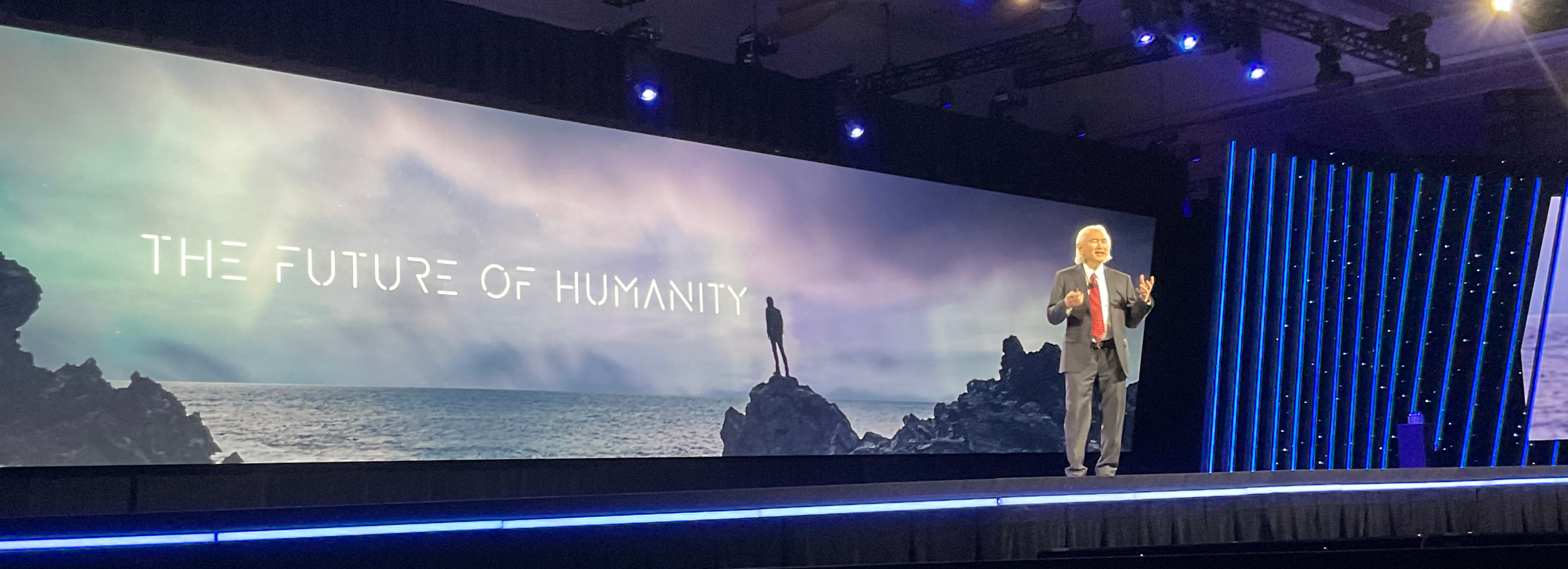
July 10, 2022
re:MARS 2022 - Our Top 5 Takeaways
Our Top Five Takeaways From re:MARS 2022
First, Quantum Entanglement And Wormholes
Honestly, I thought burgeoning practical realizations of Quantum Computing (QC) were still years, if not decades, away. I was wrong. Significant QC breakthroughs are occurring almost daily. You can even run Python programs on QC computers in the cloud now. QC is really heady stuff, with terminology like ‘qbits’ and ‘quantum entanglement’. All this talk of QC makes me want to dust off my copy of ‘Feynman Lectures on Computation.’ The promise of instant universal communications using quantum entanglement is truly magical. How can information be in two places in the universe at the same time? I’m still trying to get my head around this concept, not to mention the possibilities of encryption cracking using QC, etc.
There’s a cool Canadian company building Quantum Computers and making them available in the cloud. They even have a Python library facilitating such use. You will probably spend the rest of the day there if you visit this website: PennyLane.
But more importantly, is there actually merit to the concept of physical teleportation to other dimensions?
Second, Robot Love
I built my first robot when I was about 9 years old. My Dad helped me construct a human torso out of paper mache. Rudimentary bodily movements were made possible using servos and sundry other pieces from my erector set. When older, I built a Palm V-powered robot modeled after plans out of Carnegie Mellon University. I even developed a simple Java framework to make building robot applications for this platform easier. It was fun and instructional!
Now, however, the robots being developed have real purpose; some are increasingly human-like!
Miso Robotics are starting to put robots in fast food restaurants to start doing the messy cooking that humans don’t want to do.
Boston Dynamics are building amazing human- and dog-like robots that also perform mundane, repetitive tasks that humans don’t like doing, such as reading gauges in power plants.
The Open Source Robot Operating System (ROS2) is powering robots of all types all over the world. The community is now even working to make ROS2 space-flight worthy.
If only I had a robot to cut my grass, weed my yard, pay my bills and make my bed…soon, I think.
Third, ML Ops
Machine Learning Operations (ML Ops) is an evolution, if not iteration, of DevOps or DevSecOps. The tooling, infrastructure and automation around moving ML Models and associated data into its respective environments is referred to as ‘ML Ops’. Investors seem keenly interested in startups and tooling supporting this space. ML Ops helps to solve the problem of deploying ML Models to heterogeneous environments and still actually work, irrespective of underlying OS, GPU, etc in use.
Many believe that companies that do not already have ML Models running key parts of their back-end enterprise infrastructure (no doubt with cloud underpinnings) are already sorely behind the technology curve, soon to be disrupted.
Fourth, Autonomous Vehicles
Autonomous race cars and vehicles will soon be common place - soon as in 3-5 years, I think.
Autonomous robots are already, and have been for quite some time, exploring the Moon, Mars and the outer reaches of space on our behalf.
Jesse Levinson, Zoox CTO, has a vision of metropolitan transit driven primarily by autonomous vehicles making it no longer necessary to actually bother with owning a car (I personally think this would be awesome).
Tesla vehicles, of course, already have autonomous capabilities, albeit with some crashes on record to-date.
Fifth, Digital Twins
The concept of creating (3D) models of a system that mimics a real system describes the idea of ‘digital twins’. This is done in order to simulate real-world iterations more quickly, safely, etc in digital worlds that mimic the real one. Basically, ‘digital twins’ done correctly help to learn more, better, faster, and cheaper about systems in the real world.
MHP are using digital twins of Electric Vehicle (EV) batteries to better understand battery life and associated degradation to help improve battery design and longevity.
Some software tool mentions:
Conclusion

Overall, re:MARS is a really cool conference and on-point, I feel, with regard to the macro direction technology is taking us within the next 3-5 years. ‘Big Think’ does not get much bigger here on earth than with topics such as how to make near-real-time conference calls between the Moon and Mars, or like how to terraform planets.
Dream big. Dream 10X!
Relevant Links
James Caple
BLOG
podcast learning entrepreneurship innovation learning personal growth intelligence brain neuroscience artificial intelligence automation machine learning amazon remars remars machine learning robotics space artemis moon mars michio kaku adam savage amazon aws cloud quantum computing quantum entanglement qc Dr. Swami Sivasubramanian DevOps DevSecOps MLOps Richard Browning